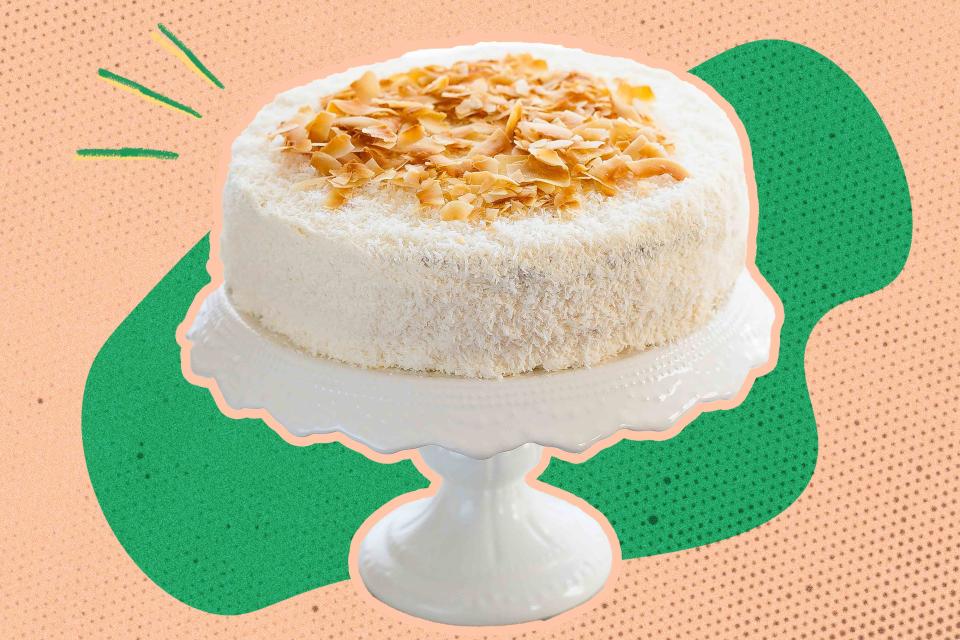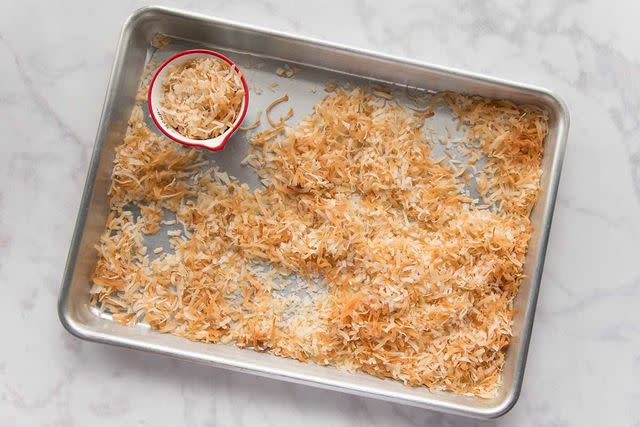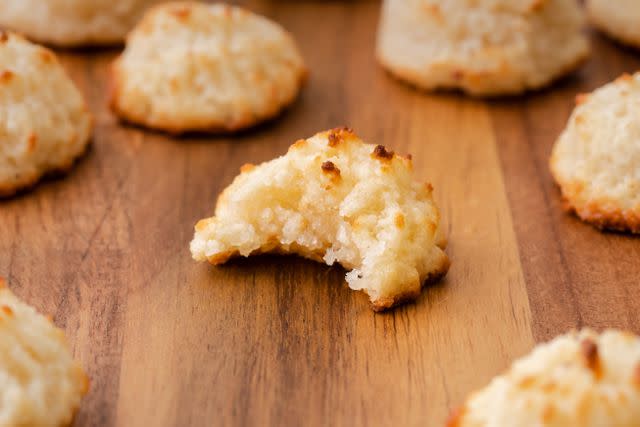Coconut Flakes vs. Shredded Coconut: Bob’s Red Mill Explains the Difference
When should you use one versus the other?

Simply Recipes / Photo Illustration by Wanda Abraham / Sally Vargas
You’re making macaroons or looking for something tasty to sprinkle on your salad. When do you reach for the coconut flakes and when do you grab the shredded coconut? Does it matter which you choose? Here's what I found out.
Both flakes and shreds are made from the flesh of the coconut.
“Flakes are larger, and look like you’ve taken a peeler to your coconut and dried the results. They can be one to three inches long, and are very thin,” says Emilie Berner, chef-instructor of Plant-Based Culinary Arts at the Institute of Culinary Education. “Shreds are smaller, and confetti-like. They’re also more prone to getting stuck in your teeth.”
“While coconut shreds and flakes both undergo drying processes, the difference in size and texture is a result of the processing method,” says Sarena Shasteen, culinary content specialist and engagement strategist at Bob’s Red Mill, a natural foods brand. “Shredded coconut requires shredding or grating, while coconut flakes are made by cutting or slicing the coconut flesh into larger pieces.”
The size and shape also affect the taste and mouthfeel of the two products.
“Coconut flakes tend to have a thicker texture, offering a chewier bite and shredded coconut has a more delicate texture,” Shasteen says. Flakes can stay crunchy even after they’ve been baked or toasted, while shredded coconut is gentler and more subtle.
“The texture of shredded coconut against the palate feels almost rough,” says Berner. “Flakes stay crunchier than shreds which tend to absorb more moisture.”

When To Use Coconut Flakes vs. Shredded Coconut
Because coconut flakes are larger, they are often used when you want to be able to see the coconut.
“My favorite use of them is in granola or used as a savory topping on top of a soup or salad for crunch. They can also be tossed in spices and liquid smoke and dehydrated to make a plant-based ‘bacon,’” says Berner.
“In general I choose coconut flakes over shredded coconut, unless I am making macaroons, then the shredded coconut—pulsed a few times to get even more shredded—are best.”
Coconut flakes and shredded coconut can mostly be used interchangeably in most recipes, but you might prefer one over the other in certain foods, says Shasteen.
“Coconut flakes are great for adding texture to baked goods such as cookies, muffins, and cakes. They are also beautiful when used to decorate cakes or pies,” she says. She also likes adding them to granola and trail mixes.
“Coconut shreds are great to blend into frostings or sprinkle/coat on top of the baked goods. They are perfect for traditional favorites like coconut macaroons and carrot cake.”

Simply Recipes / Eliezer Martinez
The Best Way To Store Coconut
Shredded coconut has a smaller surface area than coconut flakes, so it’s less likely to absorb as much moisture, which causes spoiling. That means it typically has a longer shelf life.
How you store both kinds of coconut has an impact on how long they last.
“I store them in a zip-top bag in the refrigerator, but shredded coconut and coconut flakes can be stored in the pantry if you use them often enough,” says Berner. “Because coconut is high in fat, those fats can go rancid if they are kept for a long time, or in a warm spot. In general, a cool and dry place is the best to store them.”
Read the original article on Simply Recipes.

